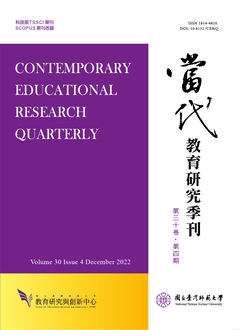

本研究主要是從分散認知理論的觀點,透過實地的參與觀察和訪談等方式,蒐集國小校長進行教學領導過程中行動者與人造物等的互動資料,以分析校長與教師等的認知歷程,並獲致了以下重要結論:一、皮(化名)校長在達成其教學領導目的的歷程中,呈現了四種行動者與人造物的互動形式;二、針對特定的人造物,校長與教師的認知系統不一致外,教師之間的認知系統也有分歧;三、校長會利用或調整人造物,以促進成員之間認知分享的機會;四、在教學領導歷程中,包含多次的討論與分享、辦理相關的活動、建立良好人際關係、關注學生需求、尊重教師專業自主等,這些是有助於成員認知趨於一致的因素。
The purpose of this study was to investigate how artifacts, if any, functioned in the process of a principal’s instructional leadership based on the theory of distributed cognition. In order to explore why instructional leadership did not always function well, a qualitative approach was adopted in this study. Through participatory observations and interviews, the researchers collected data regarding the interaction between artifacts and actors, and thus were able to clarify the cognitive process of Principal P and the teachers in the school. The four major findings included: Firstly, in the process of Principal P’s instructional leadership, at least four artifacts were identified, and four types of interactions between the artifacts and actors (the teachers and Principal P) were identified as well. Secondly, inconsistencies appeared not only in the cognition system between Principal P and the teachers, but also among the teachers. Thirdly, the principal recognized some of the inconsistencies and took steps to re-shape the original artifacts to achieve the goals of sharing thoughts among the actors. Lastly, discussion, sharing, conducting relevant activities, establishing good interpersonal relationships, concern for students’needs, and respecting teachers’professional autonomy were the factors instrumental to furthering the consistency of members’cognition.

本著作係採用創用 CC 姓名標示-非商業性 3.0 台灣 授權條款授權.
本刊國立台灣師範大學教育研究與創新中心
106台北市和平東路一段162號 | 電話: 02-7749-3670 | E-mail: cerecerq@gmail.com
教創中心 | 師大 | 電子報 | 線上投審系統
本刊由國家科學及技術委員會人文社會科學研究中心補助經費
© 2014 CERI-NTNU
